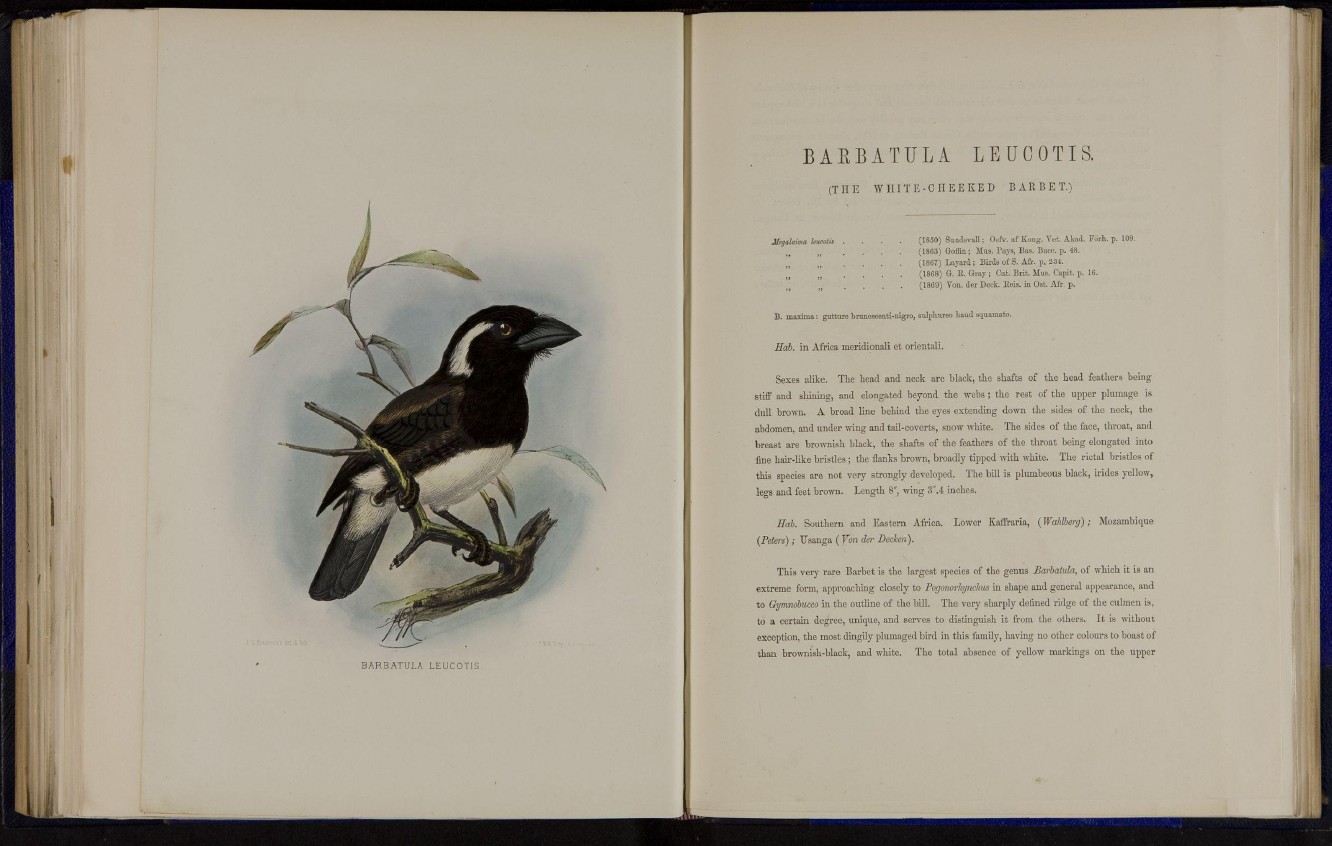
B A R B A T U L A LEUCOTIS
BARBATULA LEUCOTIS.
( T H E W H I T E - C H E E K E D B A R B E T .)
(1850) Sundovall; Oefv. af Kong. Yet. Akad. Fork. p. 109.
(1863) Goflin; Mus. Pays, Bas. Bucc. p. 48.
(1867) Layard; Birds of S. Afr. p. 234.
(1868) G. E . Gray; Cat. Brit. Mus. Capit. p. 16.
(1869) Von. der Deck. Eois. in Ost. Afr. p.
B. maxima: gutture brunescenti-nigro, sulpliuroo baud squamato.
Hab. in Africa mcridionali et orientali.
Sexes alike. The head and neck are black, the shafts of the head feathers being
stiff and shining, and elongated beyond the webs; the rest of the upper plumage is
dull brown. A broad line behind the eyes extending down the sides of the neck, the
abdomen, and under wing and tail-coverts, snow white. The sides of the face, throat, and
breast are brownish black, the shafts of the feathers of the throat being elongated into
fine hair-like bristles ; the flanks brown, broadly tipped with white. The rictal bristles of
this species are not very strongly developed. The bill is plumbeous black, irides yellow,
legs and feet brown. Length 8", wing 3".4 inches.
Hab. Southern and Eastern Africa. Lower Kaftraria, (W a h l b e r g ) ; Mozambique
(Peters) ; Usanga ( Von der Decken).
This very rare Barbet is the largest species of the genus Barbatula, of which it is an
extreme form, approaching closely to Pogonorhynchus in shape and general appearance, and
to Gymnobucco in the outline of the bill. The very sharply defined ridge of the culmen is,
to a certain degree, unique, and serves to distinguish it from the others. It is without
exception, the most dingily plumaged bird in this family, having no other colours to boast of
than brownish-black, and white. The total absence of yellow markings on the upper